
Trata-se de uma árvore alta com copa de formato de cálice. A araucária ou pinheiro brasileiro se destaca das outras espécies brasileiras principalmente por sua forma original que dá às paisagens do sul uma característica toda especial. No passado, antes que a lavoura de café e cereais cobrisse as terras paranaenses e antes que os trigais cobrissem os campos gaúchos, sua presença era tão comum que os índios chamaram de "curitiba" (que quer dizer "imensidão de pinheiros") toda uma extensa região onde esta árvores predominava. E a palavra acabou imortalizada, denominando a
capital do Paraná.
PINHÃO (FRUTO DA ARAUCÁRIA)

Bairro Cabral

Av. Candido de Abreu

Bairro do Ahú

Jardim Botânico

Botanical Garden
Inaugurated in 1991, it is one of the most visited places in Curitiba. Created likewise the French Gardens, it unfolds a flower carpet to the visitors, right in the entrance. The green house built with a metallic structure contains botanical species and a water spring as well. The native vegetation is mixed with walking tracks.
The Botanical Garden, managed by Gert Hatschbach attracts researchers from all over the world. It offers place to exhibitions, library and an auditorium. Behind the green house there is a permanent exhibition of Frans Kraycberg with 114 sculptures of that artist and environmentalist.Fonte Internet; Instituto Municipal de Turismo.
Av. Vicente Machado

TEATRO PAIOL (Bairro PRADO VELHO)
.jpg)
Symbol of the cultural change of Curitiba in the 70’s, it inaugurated the recycling process value buildings for the city’s collective memory. Built in 1906, the old gunpowder barn restored and recycled in the 70’s became an arena theater.
It was opened in December 27th 1971 and baptized by the poet Vinicius de Moraes with whisky and music specially written for the occasion, “The Gunpowder Barn”. Also participated in the ceremony Toquinho and Marília Medalha.
Fonte; Instituto Municipal de Turismo.
Ipê Amarelo

Estação Tubo

Terminal de ônibus

UNIVERSIDADE LIVRE DO MEIO AMBIENTE

Bairro do Pilarzinho
Free University Of Environment
Due to the Free University of Environment located in the middle of Zaninelli’s woods, Curitiba became the first city in the world to offer a space to study and transference of knowledge about the environment and ecology to the public. Its architectonic project reveals through rustic materials the four elements: earth, fire, water and air. Despite of the rare beauty its main goal is to bring about environmental consciousness to the citizens as a way of survival. It was created on June 5th 1991 and inaugurated by the French Oceanographer Jacques Cousteau in 1992. Fonte Internet; Instituto Municipal de Turismo
MUSEU OSCAR NIEMEYER

MUSEU OSCAR NIEMEYER
It is the largest and most modern museun in Brazil.
Designed by the architect Oscar niemeyer, the "Eye" completes one of his constructions that he built himself, in 1976.
Fonte: Instituto Municipal de Turismo
Setor Histórico de Curitiba
Historical Sector



The oldest buildings of the city are found in this place protected by a municipal decree of 1971. Among these buildings we find the house Romário Martins, of century XVIII and the Church of the Third Order of São Francisco dated of 1737, and also architectonics examples of German inspiration from the second half of century XIX. On Sunday mornings the old stones of Largo da Ordem and the wide sidewalk that gives access to Garibaldi Square, Rosário Church, Flowers Clock, Fountain of Memories and the Societat Giuseppe Garibaldi shape the scenery of the Handicraft Fair, an animated meeting point with live music.
Fonte: Instituto Municipal de Turismo
Ruinas de São Francisco setor histórico

AS RUÍNAS DE SÃO FRANCISCO
As Ruínas de São Francisco, na Praça João Cândido, são os remanescentes de uma construção inacabada que seria a Igreja de São Francisco de Paula. Em 1811, a capela-mor e a sacristia ficaram prontas, contudo, em 1860, as pedras que finalizariam as obras da igreja teriam sido usadas para erguer a torre da antiga Matriz. Existem relatos, não confirmados, de que foram construídos túneis ligando as ruínas a outros pontos de Curitiba
Ônibus Parques e Museus

Este ônibus leva você a todos os parques e Museus da Cidade
Parque Barigui

Bosque do Papa

Memorial Ucraniano

Portal Parque do Alemão

Parque Tamguá

Passeio Público

Bairro Batel

Rua das Flores

Prefeitura de Curitiba

FONTE:http://www.curitiba.fot.br/601.html
FOTOS:Luiz Bocian luizbocian@msn.com
Cidade de Curitiba


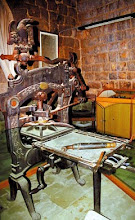
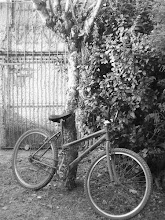
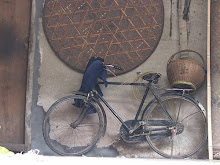

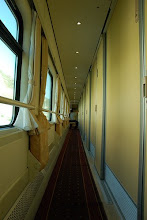

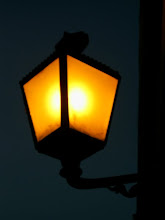

2 comentários:
Parabéns Tuka, essa cidade é
uma maravilha, e mostrada
dessa forma em seu blog fica
ainda mais aconchegante.
As fotos e o documentário são ótimos.
OLÁ BOM DIA...
SOU DE MANAUS AMAZONAS, E FIQUEI IMPRESSIONADA COM A BELEZA, ORGANIZAÇÃO, E A SINTONIA DA CIDADE COM O DESENVOLVIMENTO SUSTENTÁVEL LOCAL. PENSO EM MORAR NESSA CIDADE BELÍSSIMA! ATÉ BREVE !
DESSANA CALDAS
Postar um comentário